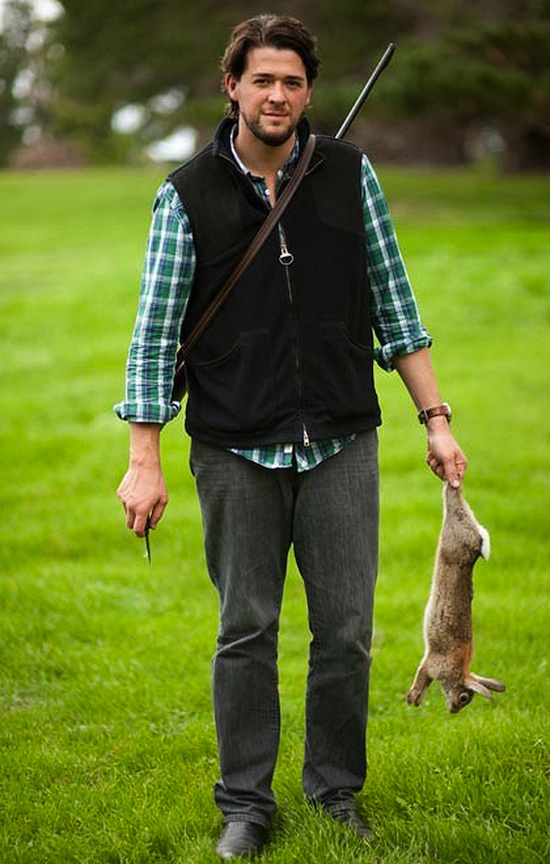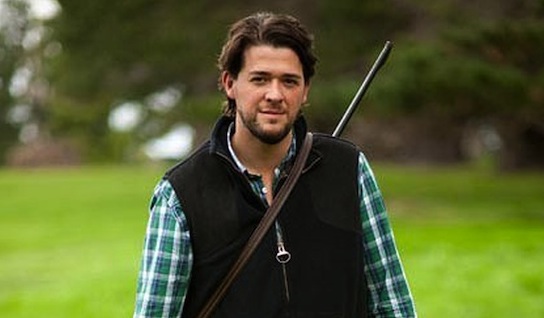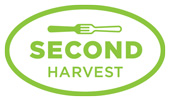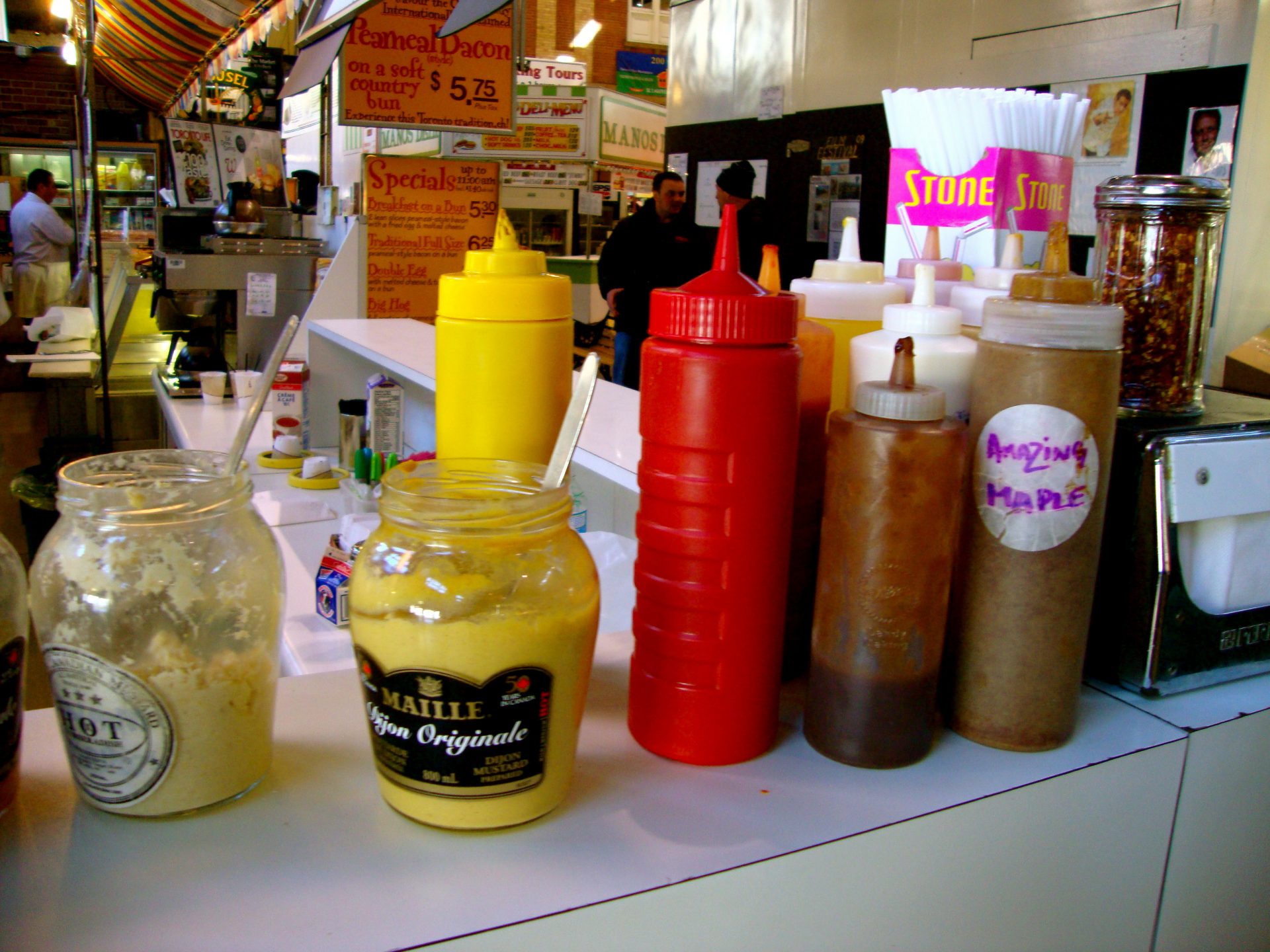
Winemaker Matt Fowles returning home after the hunt with his lunch.
Charismatic Winemaker Matt Fowles from Fowles Wines, Victoria, Australia was in town just the other week to celebrate the release of his Ladies Who Shoot Their Lunch Chardonnay on the LCBO’s General List.
We sat down for a spot of lunch at Toronto’s Luma restaurant to pick his brain about his winemaking philosophy, sheep, the Strathbogie Ranges, and his penchant for shooting small furry animals… for lunch.
Good Food Revolution: Well hello there Matt. For those readers who are unfamiliar with your wines, please tell us a little about Fowles Wines and what you get up down in the Strathbogie Ranges?
Matt Fowles: Fowles Wine is fundamentally about our region – the Strathbogie Ranges in Australia. The Strathbogie Ranges is a cool-climate mountain range near Melbourne, Victoria. Cold enough for snow in winter, this region certainly doesn’t conform with the ‘beaches and bikinis’ or ‘desert’ stereotypes of Australia! Our family runs a mixed farming enterprise with sheep, cropping and, most importantly, wine. We are all about sustainable farming.
GFR: And how did you fall into the wine world yourself Matt? You often refer to yourself as a “recovering lawyer”…
MF: As a kid I was always outdoors climbing trees and catching bugs – it is just hard-wired into me. Although I didn’t grow up in the country, every holiday I’d be running around a rainforest or on a farm somewhere. From the age of 15 I had a fascination with wine (which, at that age, was hard to fully explore!) All my ancestors in Australia were on farms of one kind or another, so perhaps it is some sort of genetic love of agriculture, but unfortunately by the time it was my parent’s turn to become custodians of the land, the farms were long gone (sold)! So they spent they professional lives slaving away (mum was a teacher and dad was an auctioneer), and I spent my early professional years as a lawyer in a big international law firm. In 2005, we took the plunge into wine when we bought a winery out of Administration. It was truly a once in a lifetime opportunity – the state-of-the-art winery was located in my ancestral homeland and was in a wine region I already knew and loved. So we took the plunge… Gulp!
GFR: Now as far as I know you have three ranges of wines: Your food wines, your regional wines, and your flagship releases. Would you mind breaking down the differences between the three for us?
MF: Our Regional Wines (Stone Dwellers and 490 metres) are about a sense of place – we want them to taste like cool-climate Victoria and, specifically, the Strathbogie Ranges. I believe the Strathbogies is one of the most exciting emerging regions in Australia and I want people to taste it in all its glory!
Our Food Wines (Ladies who Shoot their Lunch and Are you Game?), on the other hand, are about a sense of style – that is, we craft the wines to match with food, specifically wild meat. This might sound crazy, but the texture and intensity of wild meat is so different that we have changed the way we make the wine to match. This style we are pioneering has gone on to become the most awarded in our winery, and one of the most highly awarded wines in Australia.
Our Flagship Wines (The Rule and The Exception) are all about the ‘best of the best’. Best fruit, best oak, best vintages and most winemaker attention. In the case of The Rule, this is all about Shiraz – the variety from the Strathbogies that consistently excels. In the case of The Exception, these are on-off winemaking projects or remarkable parcels of fruit we have identified. For example, we have released a late harvest Viognier, Mosel style Riesling, a gorgeous couple of Cabernets (watch out for one in Vintages) and a standout Shiraz. We have late harvest Viognier being bottled now, a Cabernet Malbec resting in the cellar and a 100% Pinot Noir sparkling (magnum) in the pipeline…
GFR: Speaking of terroir-based wines, how would you go about describing the terroir of the Strathbogie Ranges? What makes this region so special to you?
MF: I could bang on about this for hours! First of all, the Strathbogies are made up of ancient granite – 440 million years old – which means the soil is nutrient poor and the vines struggle (which helps make the fruit more intense). The Bogies are full of massive granite boulders (the bed rock) which, apart from being bloody beautiful (see attached), help impart a signature in our wines. It is also an inland region – with no maritime influence – so it experiences large diurnal shifts (temperature highs during the days and then temperature lows at night) which helps with flavour accumulation and harvesting at exactly the right time. We are also elevated and windswept which means we rarely experience frost or disease – generally a very kind region to grow grapes. Finally, and perhaps most importantly, I think it is the aromatic intensity that the Bogies and Mother Nature gives us that makes our wines special and different.
GFR: How do you utilise this fruit in your regional wines?
MF: We let the fruit speak: hands off winemaking and limited oak. We celebrate variety (100% the variety stated on the label), regional influence and vintage-to-vintage variation.
GFR: And why do you think so few people have heard of the region previously?
MF: This is simple – there hasn’t been long standing investment and history in the region. Every great region in the world had vineyards planted at some point in time but, as it happens, the first vineyards in the Bogies were planted relatively late, in 1968. With that said, famous wine houses like Domaine Chandon continue to invest in the region – a great stamp of approval! (And there are many more who are interested in the region: Richard Smart, Brian Croser, Michel Chapoutier etc.)
GFR: I’m interested in the concept behind your food wines… How does one go about crafting a wine to complement food. What tools are at your disposal throughout this process?
MF: Without giving away our secrets, the key for this is aromatic intensity and texture. Worth noting, the region naturally gives us very aromatic wines and an ability to harvest ripe fruit with fresh acid (important when food and wine matching). But we can enhance this by site selection (aromatics), by using specific yeast (aromatics), by blending (aromatics and texture) and different maturation techniques (aromatics and texture). For instance, all our Ladies who Shoot their Lunch wines are matured in 5000 litre oak casks (much bigger than normal barrels) which helps soften the structure of the wine whilst keeping the aromatics intact (more so than smaller oak).
GFR: What’s your take on natural ferments? Do you play about with those at all?
MF: We like natural or ‘wild’ ferments! There is some conjecture about whether ‘natural’, ‘wild’ or ‘indigenous’ ferments actually happen in modern wineries. That is, many people believe that the commercial yeast most commonly used in wineries ends up forming the local population of yeast at the winery (they have been selected for there strength, so this is not a surprise). So we wanted to test this by taking our ferments out into the wild, free of influence from the winery. Only trouble was, everything we read said the ferments would ‘stick’ I.e. the natural/wild yeast would not have the strength required to ferment the wine dry. We figured a ‘stuck’ ferment would occur for one of two reasons: the yeast wouldn’t be strong enough to ferment dry or the temperature would climb too high (heat is a by-product of fermentation) and would kill the yeast. Obviously we were interested in natural/wild yeast, so we didn’t want to control that variable. So our Chief Winemaker, Victor Nash, had the idea to float the ferment in our dam and let the ambient temperature of the dam water regulate the temperature of the ferment. And it worked! We are calling this our ‘Dam Fine Wine’. Boom boom.
GFR: And while we are close to the subject, what’s your take on so-called “natural wines”?
MF: I don’t like the term ‘natural wines’. It kind of makes it sound like all other wines are ‘unnatural’ which is clearly not the case! I have not tried a huge amount of them and the ones I have tried do not get my heart rate up that much (although I appreciate them in an ‘academic’ sense). Of course they are interesting, but I am not sure they are fundamentally appealing.
GFR: I’m truly fascinated by your flagship wines. Please tell us a bit about The Exception and The Rule?
MF: Our Flagship Wines are about the pursuit of excellence at all costs – literally no restrictions on budget! In contrast to our Food Wines, the style here is not so much about matching with food (I don’t think these wines match as well to food), but they are certainly impressive in a classic or traditional way.
For The Rule Shiraz (always Shiraz as this is the variety the Bogies does best), this is ripe and full bodied with lashings of new oak and intensity of fruit.
The Exception is similarly hedonistic, but more experimental, and always different. We will either attempt a one-off, often never before attempted project or style and, like The Rule, there is no expense spared. The other avenue for The Exception is if we stumble across an exceptional parcel of fruit and think this needs to be preserved, alone, for all time.
So, in short, The Rule is always a classic Strathbogie Shiraz and The Exception changes year to year depending on our creative angle or what Mother Nature throws up.
GFR: And we’ll be seeing The Exception in this market pretty soon I believe?
MF: Yes, The Exception 2010 Cabernet is on it’s way. This was a terrific vintage for us – cool and even – and Cabernet was the variety that most excelled. With that said, we felt this Cabernet was a little austere on its own, so we blended a parcel of Mount Benson Shiraz into the wine – something we have never done before, but we loved this parcel of Shiraz which added weight and generosity to the mid-palate. This is a stunning wine and ridiculous value!
GFR: There’s obviously a recurrent hunting theme throughout your labelling. What’s the story behind that?
MF: I personally feel that if I choose to eat meat, then I should confront that reality. (I’m not judging others – I just needed to confront this for myself.) So after leaving the big city law firm for the country, I started raising and slaughtering my own lambs. There is nothing pleasant about that – I find it really challenging. But it has taught me to value meat and eat everything from the beast. And that is a great outcome.
More broadly speaking, this interest comes from an obsession with the idea of provenance: where does your food/wine come from? Who grew/made it? And how did they make it (inputs etc)? I don’t like eating/drinking anything without understanding some or all of this. I find this a challenge when I’m travelling, but at home we grow our own veggies and meat, brew our own beer and make our own wine. I even catch rainwater from the roof!
So with our labelling, particularly in the case of Are you Game? we are gently challenging people to look beyond the supermarket shelf and understand more about where their food and wine comes from. Even if that means going out there and getting it themselves.
GFR: And so what would you usually be hunting when you are back home?
MF: Rabbits (white/grey meat) and hares (dark red meat with a flavour all its own). I focus on these animals as they are tasty and abundant. They were also introduced into Australia by the British (not native), so as farmers we are compelled to control them anyway. Usually this means farmers poisoning them and letting them rot which I think is a terrible waste, as well as cruel. (Poisoning is also indiscriminate and kills a lot of native animals.) So I prefer to use this lovely, free-range meat to nourish my family. My three year old daughter doesn’t know the difference between commercially raised meat and wild meat, but I have noticed that she always wipes the plate clean when eating wild game… My guess is because it is so full of flavour!
GFR: Rifle, shotgun, or slingshot?
MF: Rifle. Almost always. A single, accurate shot is the best opportunity to kill the animal humanely without destroying the meat (which is important as we eat everything we shoot).
GFR: You and your family also raise sheep down there don’t you? How many sheep do you look after?
MF: We have about 5000 breeders (ewes). Ideally, that nearly doubles each year with their offspring. We love sheep (weird, I know). My dad drops our lambs off each Sunday to a local abattoir so we can supply our local butchers.
GFR: And so I would imagine that you eat farmed lamb pretty often too? Which is your favourite wine to pair with your lamb? (I ask this as access to wild game is pretty limited here in Toronto!)
MF: I love a Merlot or Shiraz. Aged Cabernet or a Cabernet Merlot is also great. Our lamb is grass fed and is grown out for longer than feedlot lambs. We grow them out to ‘hogget’ or ‘mutton’ stage of life. And with that comes intensity in flavour which our wine matches perfectly. If you like offal, as I do, you should try lambs brains which is INSANELY GOOD with our Ladies who Shoot their Lunch Chardonnay.
GFR: And I hear that you are quite the talent in the kitchen. Tell us about a few of the dishes that you enjoy cooking with the spoils of your hunts?
MF: When I moved to the country, I don’t think I was that good a cook. We used to eat out a lot in the city as we were busy professionals and it was just so easy. But living where we now do, 35 kilometres from the nearest supermarket, we have had to learn to be a lot more self-sufficient. Basically, I got sick of eating my own shit food and thought I better learn how to cook! So I did. All self-taught and driven by great produce which we grow ourselves. Like wine, if you start with great ingredients, the cook’s job becomes much easier. It took a while, but plates usually get wiped clean. And I have even cooked on TV a few times now, including a spot on Canada AM!
My favourite dish to cook is rillettes – it is infinitely flexible, takes many layers of flavours, is easy to prepare and easy to share if people just want a taste. Did I mention delicious!?
GFR: Your Ladies Who Shoot their Lunch Shiraz and Chardonnay (both on the LCBO General List these days) are quite different from other Australian Shiraz and Chardonnay in the market in that particular price category. In your mind what is it that sets these wines apart from so many others out there?
MF: The thing that sets these apart is our sense of style – we are literally blending these wines to complement the texture and intensity of wild game meat. No other winery in the world has attempted this! And, interestingly, this style is now the most awarded in our winery’s history! We even won “Australia’s Best Shiraz” in 2010 which was unbelievable… This wine show (The Great Australian Shiraz Challenge) was judged by legendary winemaker Stephen Henschke which was very flattering. And we were the first Victorian winery ever to win the award.
GFR: Where are your main markets for your wines Matt? Do you sell much domestically?
MF: We still sell the majority of our wine domestically. We have enjoyed great support in Canada of course. China is racing up the charts – certainly the fastest growing. And we have just gone back into the UK, so I think we will see some pretty exciting action over there in the next few years. Scandanavia, Central Europe etc etc We’ve even sold some wine into India!
GFR: How do you feel Australian wines are currently perceived in the Canadian market?
MF: I think there is a genuine affection between Australia and Canada on all levels. This applies to wine and I don’t think that will ever change. However, I feel like Aussie wine has been overrepresented in the Canadian markets by the commercial wines of Australia (perhaps that’s reality everywhere due to price). I think this has manifested in a lack of excitement around Australian wine… But we’re here to help change that!! There is an amazing fine wine story to be told by Australia and the Canadians have shown they are discerning listeners! By spending a few more dollars per bottle, a whole new world opens up to wine drinkers.
GFR: And so you obviously see many opportunities for the right wines here then? Can you see a sea change in the style of Australian wines as a whole?
MF: I think Australia has always made exciting, regional wines. But that message was drowned out by big, alcoholic and overly extracted wines for a while. I think the vast majority of Australian wineries recognise this now and I have seen a return to the norm. I am also certain that people are seeking out wines from cooler climate regions which are generally more elegant and a better match with food.
GFR: And leading that vanguard will be Fowles Wines! Matt, thank you for your time, and we very much look forward to a bit of hunting with you in the near future.
MF: Always a pleasure Jamie! Thanks mate and, yes, you can be my next Lady who Shoots her Lunch!
GFR: Hey! Less of the “lady”…
…

Edinburgh-born/Toronto-based Sommelier, consultant, writer, judge, and educator Jamie Drummond is the Director of Programs/Editor of Good Food Revolution… And he’s looking forward to a bit of hunting with Matt. Watch this space…







